| Mosaic Hamsters By Linda Price |
| Mosaics have been around for a long time in the Syrians. To the right is a picture of a Mosaic youngster that was born in one of Chris and Peter Logsdail’s litters (Towy Vale Hamstery). You can see the noticeable black patches on her side.. No one has yet been able to reproduce Mosaics. They occur very infrequently in litters and seem to be most common in the Black-eyed Cream syrians. |
| There have been a number of odd colorations in the Campbells in recent years. It appears that these, too, are Mosaics and that Mosaics are more common in the Campbells than they are in the Syrians. I have had more than 10 of them myself. Most of them occur in conjunction with the Argente gene but some have also popped up in the Black-eyed Argente gene. It appears that these Mosaics can have a number of different patterns. The most common are in the Dove Campbells. These have a dark patch usually on the side or hind quarters. These are similar to those I have seen in the Syrians. I’ve had a number of these and seen pictures of others which have popped up in the US. |
| There is also another pattern which has appeared. It is not reproducible and appears to be something along the lines of a Mosaic. This has occurred in my Black-eyed Argentes and in my Blue Fawns. This pattern is more of a striping pattern similar to brindling -- and we've sometimes called it brindled. It is quite attractive but appears to be random and is not reproducible. I have only had three of these and have seen one other. The key difference is that these don't breed as they should genetically. The Opal/Blue Fawn ones should appear and breed as Blue Fawns due to their pedigrees, but they breed like Opals.. The BEA (daughter of two BEAs), when bred to another BEA, produced Normals. |
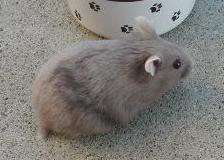 |
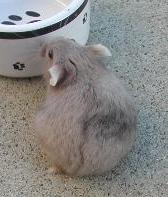 |
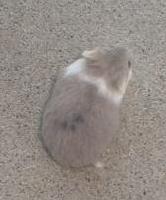 |
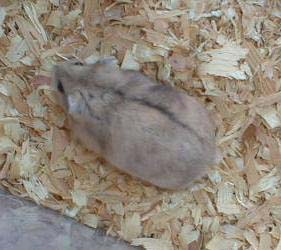 |
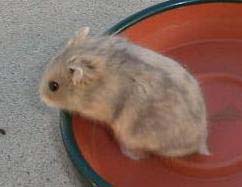 |
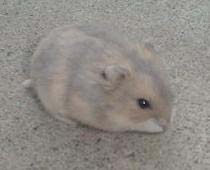 |
| These are a couple of my Mosaic Doves. They are born this way and maintain this coloring throughout their lives. The bottom left one is also silvering. |
| The picture to the right is my mosaic BEA. Bottom left is a Mosaic Opal/Blue Fawn female. To her right is a male of the same coloring. They were born within a couple of weeks of each other and paired together. The pattern was never reproduced in any of their offsping. |
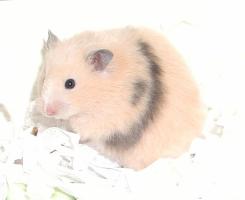 |